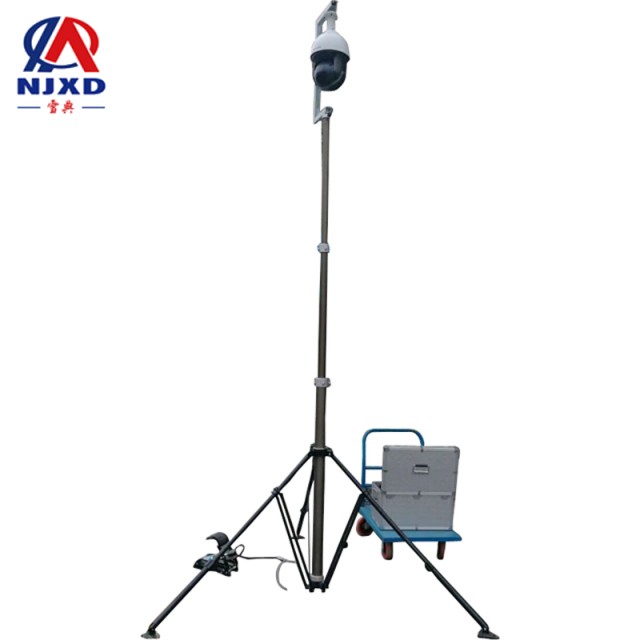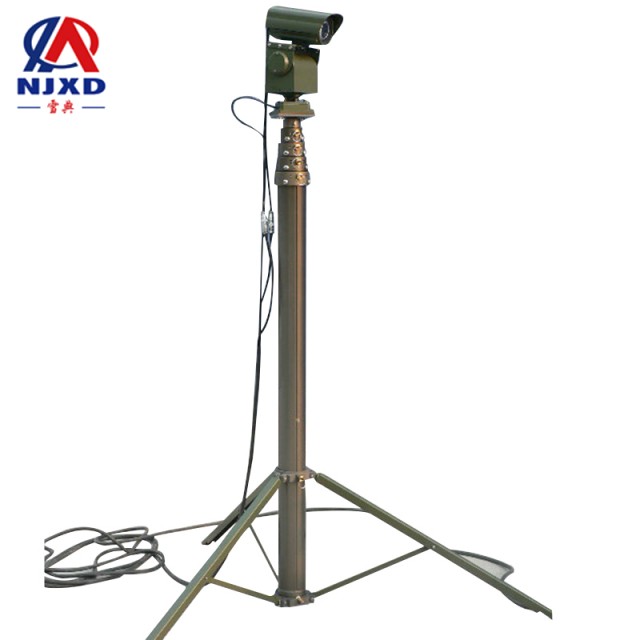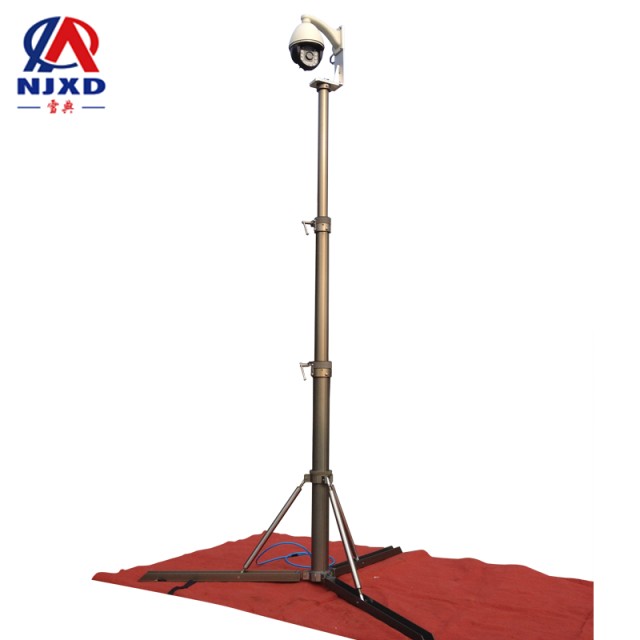NEWS
Main functions of security lifting monitoring
Time:2021-06-16 View:

Main functions
A large TV monitoring system operating in conjunction with anti-theft alarm gauge height and constitutes a complex system. Although all kinds of failure phenomena may occur, as long as the quality of the selected equipment and equipment is well controlled and the construction is strictly in accordance with the standards and specifications, there will generally be no big problems. Even if it appears, as long as we analyze and think calmly and do not blindly tear down and unload, we will solve the problem quickly.
Security monitoring system is a new major that people pay more and more attention to. From the perspective of development, the application is becoming more and more popular and the technology content is getting higher and higher. Almost all high and new technologies can promote its development, especially the advent of the information age, which provides opportunities for the development of this major. However, as far as the monitoring industry is concerned, the system composition has not been clearly divided, which makes it inconvenient to communicate with engineers and users when talking about the security monitoring system.
For the security monitoring system, according to the different functions of each part of the system, we divide the entire security monitoring system into seven layers-presentation layer, control layer, processing layer, transmission layer, execution layer, support layer, the collection layer. Of course, due to the increasing integration of devices, for some systems, some devices may exist in the system as multiple layers at the same time.
Presentation Layer
The performance layer is the most intuitive one we can feel, which shows the quality of the entire security monitoring system. Such as monitoring TV wall, monitor, treble alarm speaker, alarm automatic telephone connection and so on all belong to this layer.
Control Layer
The control layer is the core of the whole security monitoring system, and it is the most clear embodiment of the system's scientific and technological level. Generally, there are two control methods-analog control and digital control. Analog control is an early control mode. Its console is usually composed of controller or analog control matrix, which is suitable for small local security monitoring system. This control mode has low cost and low failure rate. However, for medium and large security monitoring systems, this method seems to be complicated to operate and has no price advantage. At this time, our more wise choice should be digital control. Digital control takes the industrial control computer as the control core of the monitoring system. It changes the complex analog control operation into a simple mouse click operation, and reduces the huge analog controller stack into an industrial control computer, turn a complex and large number of control cables into a serial telephone line. It turns medium and remote monitoring into facts and makes it possible for Internet remote monitoring. However, digital control is not so perfect. Problems such as the high price of the control host, the waste of modules, the possible collapse of the system, and the lagging control still exist.
Processing Layer
The processing layer may be called the audio and video processing layer. It distributes, magnifies, splits, etc. audio and video signals sent by the transmission layer, and organically connects the presentation layer with the control layer. Devices such as audio-video distributor, audio and video amplifier, video splitter, and audio-video switch all belong to this layer.
Transport layer
The transport layer is equivalent to the blood of the security monitoring system. In small security monitoring systems, our most common transmission layer devices are video cable and audio cables. For medium and remote monitoring systems, we often use RF cable and microwaves. For remote monitoring, we usually use Internet as a cheap carrier. It is worth mentioning that the new transmission layer medium-network cable/optical fiber. Most people have a misunderstanding in digital security monitoring. They think that the digital security monitoring system used in the control layer is the digital security monitoring system, which is actually not the case. The transmission medium of pure digital security monitoring system must be network cable or optical fiber. When the signal comes out of the acquisition layer, it has been modulated into a digital signal. The digital signal runs on a mature network without attenuation in theory, this ensures no loss display of remote monitoring images, which is simulation transmission incomparable. Of course, high performance returns also require high cost investment, which is one of the most important reasons why pure digital security monitoring system cannot be popularized.
Execution layer
The execution layer is the command object of our control instruction. In some cases, it is not completely separated from the support layer and collection layer we mentioned later. We think that the controlled object is the execution layer equipment. For example: PTZ, Lens, decoder, ball, etc.
Support Layer
As the name implies, the support layer is used to support backend devices, protect and support acquisition layer and execution layer devices. It includes support, protective cover and other auxiliary equipment.
Acquisition layer
The collection layer is the key factor of the quality of the whole security monitoring system, and it is also the place where the system cost is the largest. It includes lens, camera, alarm sensor and so on.

IDRS
Overview
IDRS distributed network video centralized monitoring and management system (IDRS Distribution net-video management system), hereinafter referred to as IDRS NVMS, is a set of application software developed in conjunction with IDRS series of digital monitoring products and running under Microsoft Windows platform.
IDRS NVMS is a high-tech product designed to meet the special requirements of large remote monitoring systems in terms of availability and functionality. It is based on various technologies such as computer, multimedia, network, video codec, communication and so on. It is composed of general PC and software modules and operated by mouse and keyboard, run on an IP network that supports both voice and data communication. Through it, monitoring personnel can quickly connect to different monitoring areas through the network and realize various monitoring and management functions.
IDRS NVMS adopts an open system architecture and is equipped with standard hardware equipment. It can freely build a monitoring and management platform according to different needs and site conditions. The flexible and value-added solutions it provides make general digital monitoring systems far beyond reach.
Product background
As the world enters the digital era, the demand for network remote monitoring is increasing. People hope that with the help of network, a convenient and fast channel, they can obtain more security and management requirements.
Modern large-scale network remote monitoring projects generally have the characteristics of many monitoring points, scattered monitoring areas and different network conditions. At the same time, management requires the establishment of a multi-level user management mode combining centralized and decentralized. Operation requires outstanding simplicity and flexibility, while function requires perfection as much as possible. However, common network monitoring solutions cannot meet the needs of multiple tasks at the same time. Therefore, we have developed and provided this set of more advanced and professional solutions.
Scope of Application
Monitoring sites are scattered, and a large number of large-scale monitoring projects need to establish a centralized management mode. Monitoring projects need to integrate PC-type, embedded hosts, and network monitoring projects of network video servers. Monitoring projects that require multi-user, multi-department, and multi-level permission control need to simplify network monitoring operations. The project monitoring center needs to set up a TV wall, and the project front-end network for centralized alarm management is unattended, projects that need centralized monitoring through the network need centralized storage and streaming media forwarding functions. Project application fields: financial industry (remote centralized network monitoring of bank outlets, credit cooperatives and postal savings) public security, traffic System (urban road monitoring, Expressway Monitoring, urban public security joint defense monitoring, "digital urban management" and "Safe City" monitoring system) education system (examination room monitoring, campus security monitoring, remote teaching, etc.) oil Field and coal mine system (remote centralized network monitoring of oil well, oil pipeline and mine) Telecom, water conservancy and electric power industry (network monitoring of computer room and unattended base station) large enterprises across provinces and cities, public institutions, chain stores and other entertainment and commercial places (dance halls, Internet cafes, bars, nightclubs) common security monitoring systems in military hospitals
1.3G video surveillance
3G video surveillance, as a supplement to fixed-line video surveillance, uses high-bandwidth wireless access to support uploading on-site images at any location and receiving remote images at any location, and integrates with fixed network video monitoring system to realize full coverage of monitoring in time, place and other aspects. The 3G video monitoring system is not a market snatch with the existing fixed network monitoring system, but a typical 3G Multimedia application with high-end and differentiated characteristics, which can widely serve emergency command, bus monitoring, home monitoring, public multimedia services and other fields, thus expanding the application environment and usage mode of video monitoring on the basis of the original monitoring system, giving users a more friendly, convenient and personal business experience.
2. Digital video surveillance
In the mid-1990s, PC-based multimedia monitoring came into being with the development of digital video compression and coding technology. The system has several cameras, various detection and alarm probes and data equipment at the remote end to obtain image information, connect them to the multimedia monitoring terminal through their respective transmission lines, and then through the communication network, pass this information to one or more monitoring centers. The monitoring terminal can be a PC or a dedicated industrial controlling machine. This kind of monitoring system has strong functions and is convenient for on-site operation; However, the stability is not good enough, the structure is complex, and the video front end (such as CCD and other video signal acquisition, compression, communication) is relatively complex, the reliability is not high; The power consumption is high and the cost is high; Many people need to be on duty; At the same time, the openness of the software is not good, and the transmission distance is obviously limited. Extension of surveillance system (DVR)-DVS, a digital network video surveillance system with video network server and video integrated management platform as the core. The network digital monitoring system based on embedded technology does not need a PC to process analog video signals, but directly converts analog video signals output by cameras into IP digital signals through embedded video encoders. Embedded video encoder has powerful functions such as video coding processing, network communication, automatic control, etc., and directly supports network video transmission and network management. Such systems can be directly connected to Ethernet, it saves all kinds of complicated cables and has the characteristics of convenience and flexibility, plug and play, etc., which makes the monitoring range reach unprecedented breadth. In addition to encoders, there are independent hardware modules such as embedded decoders, controllers, and video servers, which can be installed separately and interconnected by different manufacturers. DVS is a mainstream monitoring system with better performance than the first generation and DVR. It has a price advantage and relatively mature technology than the third generation. Although the construction wiring will be more complicated in some cases, it is generally not good.
Main performance characteristics of digital monitoring system
(1) high stability: all functional modules of the system do not interfere with each other and work together. Even in the case of sudden power failure, the original data will not be lost, after restarting, the operation will continue according to the original configuration information.
(2) fast running speed: the unique thread processing technology makes the system have high stability while still ensuring the smooth running of the system. Compared with similar products, this system can run in lower configurations.
(3) clear Image quality: it can be compressed and stored in Half-D1 image format, so that clear image quality can be obtained both locally and remotely.
(4) support motion detection, preset point setting and linkage alarm.
(5) support 16 channels of alarm input and output, without alarm host, alarm output support sound card alarm and PC speaker alarm.
(6) support 16 channels of real-time video preview and compression, support 16 channels of audio input. Real-time audio and video compression and recombination are completed by hardware without occupying CPU resources.
